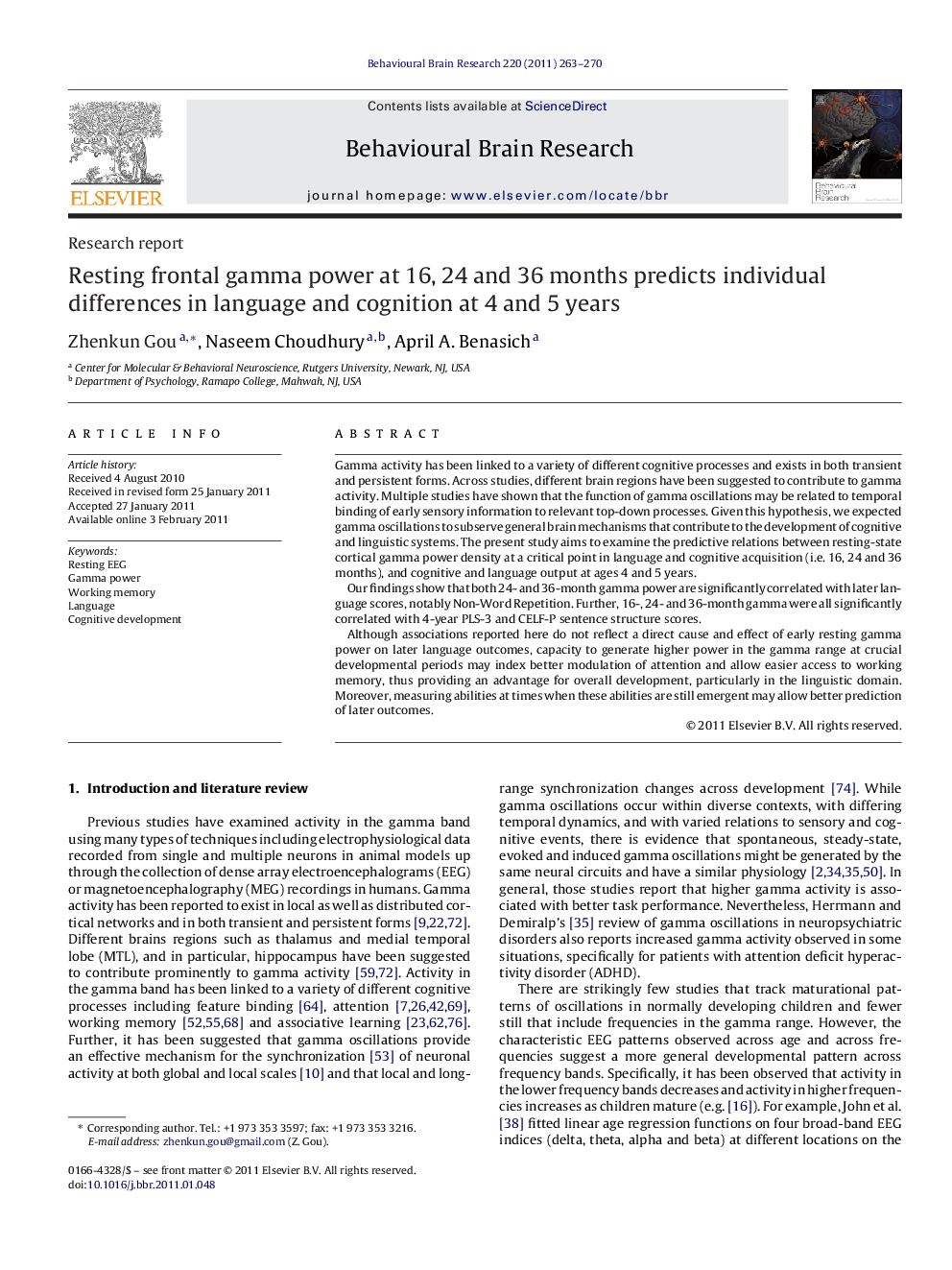| کد مقاله | کد نشریه | سال انتشار | مقاله انگلیسی | نسخه تمام متن |
|---|---|---|---|---|
| 4313747 | 1612998 | 2011 | 8 صفحه PDF | دانلود رایگان |

Gamma activity has been linked to a variety of different cognitive processes and exists in both transient and persistent forms. Across studies, different brain regions have been suggested to contribute to gamma activity. Multiple studies have shown that the function of gamma oscillations may be related to temporal binding of early sensory information to relevant top-down processes. Given this hypothesis, we expected gamma oscillations to subserve general brain mechanisms that contribute to the development of cognitive and linguistic systems. The present study aims to examine the predictive relations between resting-state cortical gamma power density at a critical point in language and cognitive acquisition (i.e. 16, 24 and 36 months), and cognitive and language output at ages 4 and 5 years.Our findings show that both 24- and 36-month gamma power are significantly correlated with later language scores, notably Non-Word Repetition. Further, 16-, 24- and 36-month gamma were all significantly correlated with 4-year PLS-3 and CELF-P sentence structure scores.Although associations reported here do not reflect a direct cause and effect of early resting gamma power on later language outcomes, capacity to generate higher power in the gamma range at crucial developmental periods may index better modulation of attention and allow easier access to working memory, thus providing an advantage for overall development, particularly in the linguistic domain. Moreover, measuring abilities at times when these abilities are still emergent may allow better prediction of later outcomes.
Research highlights
► 16-, 24-, and 36-month resting gamma predicted to later phonological working memory.
► Early gamma power predicted to 4–5 year language including syntactical skills.
► Resting gamma may tap neural synchronies critical to efficient language processing.
► Measuring emergent abilities may allow better prediction of later outcomes.
Journal: Behavioural Brain Research - Volume 220, Issue 2, 7 July 2011, Pages 263–270